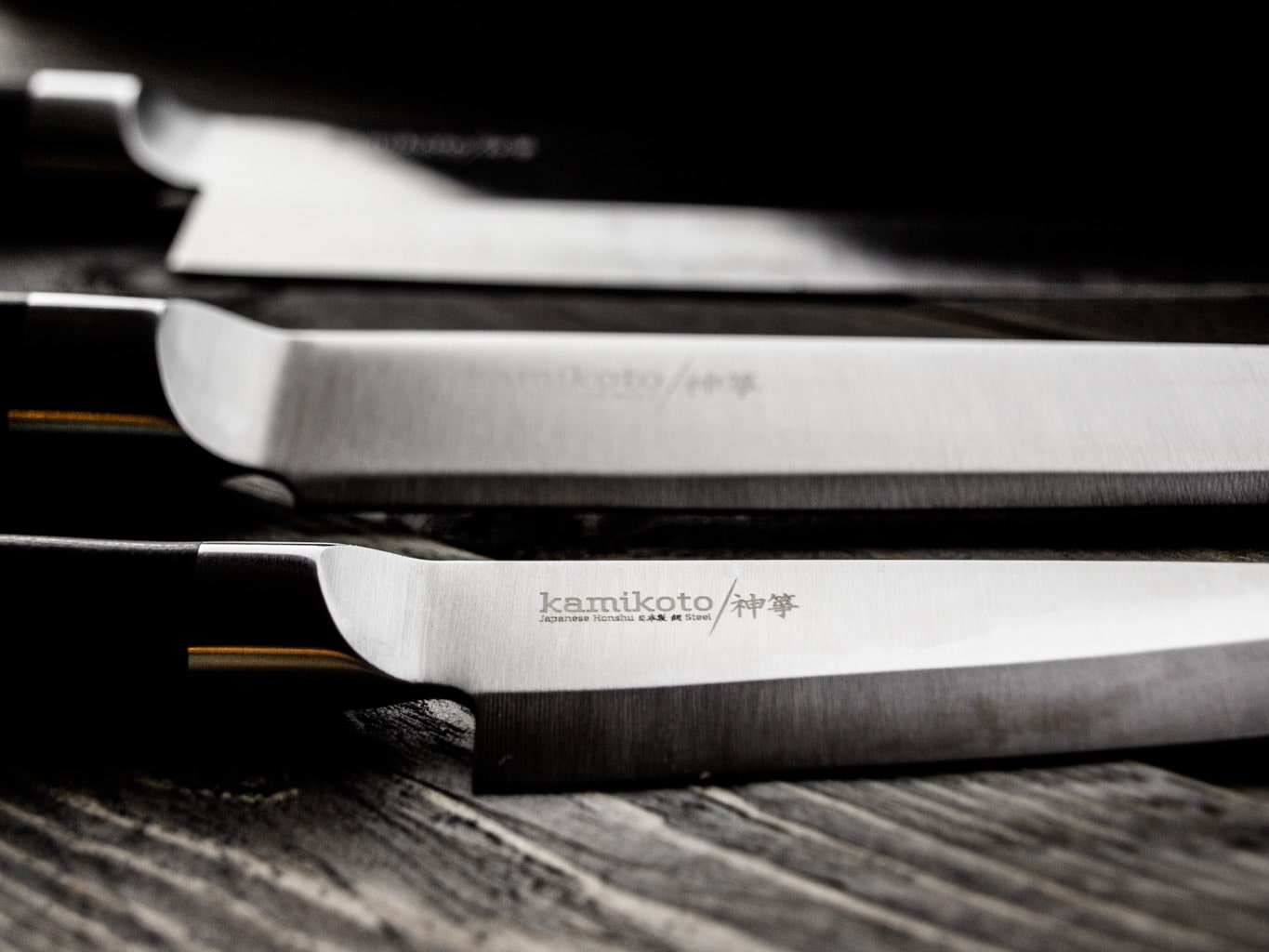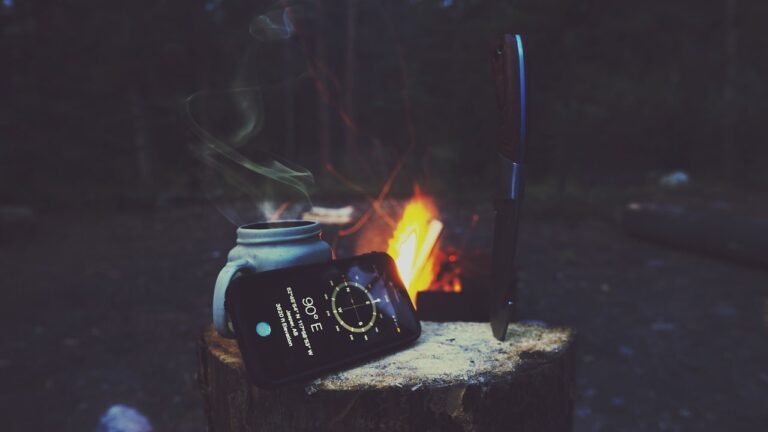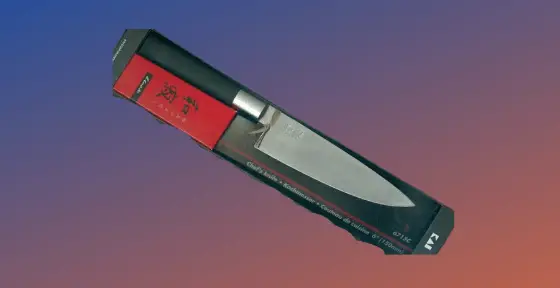Kamikoto knives are a brand of Japanese knives that come with the usual marketing promise of being the last knives you’ll ever need. If you are like me, though, you want to get the best value for your money and mediocre knives just won’t cut it for you, all pun intended.
So, are Kamikoto knives good enough to be in your kitchen or are you better off with other knives? Dig into this review to find out what makes the Kamikoto knives tick, what I like about them, and areas where I believe they could have improved.
Long answer short: Not really. If you want quality, well-made Japanese knives, check out the Shun Knives review instead. Kai Wasabi knives are also great – or you could settle for the Serbian Coolina knives instead.
Table of Contents
What are Kamikoto knives?
Kamikoto knives are a brand of Japanese knives with claims to have been crafted from an ancient method that ensures the durability of the blade and the high quality of the overall process. While there is no way for us to verify this ancient design method, that has probably helped them to slap a relatively high price on these knives.
Well, higher than I have seen on most Japanese knives I have reviewed, bordering in the region of the Shun knives.
Kamikoto knives are present in different models showcasing the beauty of different Japanese knives while also bringing a spin on western knives from the maker’s perspective.
Kamikoto also retains its craftsmen for multiple generations to ensure the same quality and techniques are passed down from the past one to the current one. I found a beautiful video from the company to support that where they have a fourth-generation craftsman on their board.
One of the things that I love the most about the knives is how they ship in a fine wooden box which ensures the safety of the knife in transit and can also help with proper knife storage later.
Boasting different sets and line-ups today, the Kamikoto knives have been advertised well enough and used by some knife lovers that it deserves a review like this.
If you were looking to put some money on good Japanese knives, read on to find out more.
Where are Kamikoto knives made?
Kamikoto knives are advertised as Japanese knives but are produced out of a factory in Yanjiang, China. These Japanese knives still follow the same design elements and production styles of Japanese knives but are not made in the country like the Shun or Kai Wasabi Japanese knives.
However, just as the Seki City in Japan is known for its amazing work with bladed tools, Yanjiang of China is also a hub for such knife productions. That is why I don’t use this as a dealbreaker for the Kamikoto knives since they are made out of a region with a legacy for quality knives too.
Of course, that is a personal choice – but I think you would see reason in that too. Also, the company might just be looking to save production costs on their knives better so they bring them to the market at relatively lower prices.
Knives in the Kamikoto Series Line-up
Here are some of the products that have helped take the Kamikoto knives to the public eye as we have them today.
Kanpeki Series

The biggest issue I have with this one right out of the box is that it doesn’t mention the core steel on the knives.
Kamikoto made mention of Japanese steel but that can mean several things. I have seen Japanese knives use blue steel, Damascus stainless steel, and high carbon stainless steel. The knives from this region prefer carbon stainless steel but I would still like to know what I am dealing with here for sure.
The round handle on the Kanpeki knives reminds me of the Kai Wasabi knife set and how those offer interesting grip levels. I have never been a fan of round handles (I think they don’t have enough grip) but with the right graining on the material, they handle well also.
That said, though, they did make an interesting argument with the choice of knives in the series. Here, we have:
- The 7-inch Nakiri knife – great for handling vegetables;
- An 8.5-inch slicing knife; and
- A 5-inch utility knife;
While they don’t bring the usual santoku/ chef knife or paring knife to boot, this collection can still handle general tasks pretty fine for you.
Knives in the series: 7-inch Nakiri, 8.5-inch slicing knife; 5-inch utility knife
Kuro Series

So, just like they did with the Kanpeki series, Kamikoto somehow forgot to tell us what core steel they are using here also. I am starting to not like this about them at all. How else are we supposed to compare how the knife does against similar steel from other manufacturers in this price category?
Perhaps to make up for that is the black patina they introduced on this knife. I am all for good-looking knives but we all know it’s not the looks that cut the food properly at the end of the day. Fortunately, this knife gets very decent cuts for the price you pay for the set.
Speaking of the set, Kamikoto does one better here by including a santoku knife for those who want it. That remains the biggest difference between this set and the Kanpeki series for me.
You will also notice the knives in this series are doubly-beveled which should give them an even better cutting angle, ensure double-handed usage, and smoother operation.
And oh, if everything else goes well, this is a fine-looking knife to have in your kitchen.
Knives in the series: 7-inch santoku; 6.5-inch Nakiri knife; 5-inch utility knife.
Kensei Series

For starters, this is not a knife series you should be bothered with if all you do is general cooking. Even if you were a chef, there is a high chance you never need the knives here.
We already know Kamikoto likes to play hide and seek with the core steel on their knives, even though I think it is some low-quality steel in play here. For this series, they offer a lifetime guarantee on both the Kiritsuke knife and boning knife that comes in the box.
These are specialist knives that should be reserved for those who know what to do with them alone.
Overall, I appreciate the minimalist design element on both knives but they could have reduced the length of the Kiritsuke a little bit. I get that they are trying to pack all that value for money in there but 9.5 inches does sound and look like overkill.
Knives in the series: 6.5-inch boning knife; 9.5-inch Kiritsuke knife
Senshi Series

I can almost bet that you have never heard of this one before – or it is not even the one you saw before you started digging deeper. Ironically, I think it is the one I would pick if I were starting with knives, knowing I cook only for myself and maybe only a few other people sometimes.
This truly minimalist set features just a chef knife and a utility knife.
For a Japanese brand, I was surprised as to why they went with the chef knife instead of making a santoku blade instead. This might be an attempt by the company to appeal to western buyers who don’t need all the bells and whistles but simple knives for a lot of tasks.
One of the things that makes me love this knife the most is the wooden display stand shipping with every unit. I am big on knife safety, so no surprises there, but I also love the fact that the stand looks good. I can almost imagine how it could make a kitchen countertop better.
While I would prefer my chef knives at between 7-8 inches at the maximum, Kamikoto has added some more length to make this one a 10-inch blade. If you have small hands, it’s better to go for what you get in the Kuro series instead. Even with my bigger hands, such a long knife will take some getting used to.
Paired with the right size of a utility knife to match, though, I can’t complain too much here.
Knives in the series: 10-inch chef knife; 5.5-inch utility knife.
Should you buy Kamikoto knives or not?
There are a series of things I look at to determine whether a knife is worth buying or not. Instead of just giving you a blatant yes or no answer here, I will walk you through the thought process below so you come up with your unique answer, besides my opinion.
Materials of Make
This is the first and biggest red flag for me on these knives.
When I look at the reviews from home cooks and even Michelin star chefs, I see almost everyone saying they are good knives. Yet, I don’t know what materials the blades are made out of and the company is not helping matters either.
Some additional digging showed me that these knives were made of 420J2 steel. I don’t want to believe that very fast because that steel is one of the lowest-quality that can be used for a knife, even if it holds well against corrosion.
As if that is not enough, they don’t even tell us what material the knife handle is made of.
If there is any consolation, the company claims to only use steel it gets from Honshu, a Japanese island. There is nothing else to tell what kind of steel they get from here, but we are to assume it is of high quality.
At least, they gave us something to go on, right?
Build Quality
For a set of knives that I don’t know what materials went into the blade or handle, the Kamikoto knives are well-made to grace your kitchens. From a glance, at least.
I love the uniform feel of the knives as the design slopes from the blade through the bolster to the handle.
Speaking of handles, the brand seems to love the round form factor with what looks like G-10 material. This makes the handle even safer against water attacks, gives it slightly better grip, and helps it last longer than some wooden handles.
There is, however, the hand-forged claim which Kamikoto slaps on its knives. While I don’t dispute that this could be how they started, I don’t see it as a viable way to continue making knives. So, for a brand that makes and sells knives on such a global scale, I don’t believe they still hand-forge every blade that comes out to you.
Of course, it keeps the hand-forged quality with some good finishing to ensure smoothness on the edges, but they are in no way still hand-forged in their entirety.
Edge Retention
If we are talking about great edge retention on a Japanese knife, I’m yet to see what beats the longevity of the Shun Knife set. Making a fair comparison for what these Kamikoto knives cost, though, they handle fairly well initially and will continue to cut well over time too.
To see what they look like in action, I have included a chef’s video cutting different items with different Kamikoto knives for you:
If that video tells you anything, it is these knives are plenty sharp enough – and they will remain that way for a while.
Always remember to hone down your knives and sharpen them professionally when honing does not work anymore – which should be about 1-2 times per year.
Versatility
Here’s where the Kamikoto series won the trophy for me.
I like knife manufacturers who aren’t just trying to sell you a bunch of knives you’d end up not using anyway. With Kamikoto, you get knives designed to work for a variety of purposes (except you’re picking up the Kensei series which is a little bit more specialized).
My best pick would be the Senshi series, and I would go for the Kanpeki series if I wanted a little bit more. The Kuro series also balance things out (especially with its 7-inch santoku, just the size I like them at) with a collection of knives to do just about anything you want in the kitchen.
Bread knives or serrated edge blades are noticeably missing from the line-up but I know I can get by with either a Nakiri, santoku, or utility knife anyway.
Whether it is cutting vegetables, slicing some desserts, processing home food items, or cleaning out meat, I’m sure the Kamikoto knives would handle it quite well.
Safety
A sharp knife is always safer than a dull one, so I like the fact that these blades come sharp right out of the box. The argument on how well they retain their sharpness does not score them any major points, but they do hold their own quite well anyway.
Likewise, Kamikoto ships its knives with a wooden case or display stand you can store them in when not in use. To me, that subconsciously promotes better knife storage and handling which is also a safety thing.
Looking at the blades themselves, I do have a concern with the 10-inch chef knife in the Senshi series, especially for users with smaller hands. In that case, I would recommend the 7-inch santoku from the Kuro series instead as it is better balanced.
Speaking of balance, these Kamikoto knives are a little heavier and bigger than most Japanese knives I have ever come across. No one ever set a size guide for them but that could be a safety issue if you are expecting the usual Japanese knife style you are used to.
Overall, they score good marks in the safety aspect and I wouldn’t take too much away from them.
What I love the most about Kamikoto knives
First things first, these are good-looking knives for the price they come at. If you were picking off individual knives, I would say they are comparable to the Shun knives or Kai wasabi knives in the looks department.
These sets are also designed to be functional to the end-user, not just about cramming the most knives in there. Such a customer-focused arrangement endears me to the brand even more.
Looking elsewhere, you cannot fault that the knives are well-balanced in the right hands. I say the right hands because some (such as the 10-inch chef knife I’ve been mentioning all day) might be too big for some users.
Seeing how the bolster, blade, and handle all come together, though, Kamikoto did its best to make sure these knives are never too cumbersome.
Finally, I appreciate the versatility of the knives, so much that they work for chopping, slicing, mincing, and other cutting operations.
Lest I forget, I think it is amazing that Kamikoto offers a lifetime guarantee on these knives. This is a fine way to let customers know they stand behind all the promises made on the quality, durability, and longevity of the knives.
What I don’t like about Kamikoto knives
If I could make a guess, you started looking for more information on these knives after you saw a massive discount ad on them, right?
Well, I am not a fan of such advertising as it could go sideways for the brand and consumers. For one, you are making buyers feel like they are getting a much better deal than they are. That raises expectations too high and might lead to disappointments.
During my research into the brand, I saw that they slashed their prices massively after removing the middlemen in their sales channels and bringing the knives directly to consumers. I want to believe that to be the truth and not just some marketing gimmick.
Again, I don’t appreciate the fact that the company doesn’t mention the exact core steel used in their knives. All they say is that it is high-quality steel soured from a region in Japan, which is not much to go on.
Did I tell you about the one-sided edge on some of their knives (like the Kanpeki)? If you’re left-handed, I would recommend you stay away from that series – and every other single beveled knife – you see on the market.
Final Thoughts on Kamikoto Knives
I would not buy these knives after everything I have said.
There is no way they are going to sell for the non-discounted price of $600+ they are usually listed for, so their discounted prices look like the real deal anyways. For about $200 or slightly more, they are selling closer to what they should be priced at.
The fact that I don’t know what steel is used in the knife for sure makes the decision tougher for me. Cos, while they look like good knives, I can’t shake the fact that I’d be going into the purchase process blind.
I have seen real-life users with good things to say about these knives too but what if they are not telling me all the truth?
If you’d still like to buy one, I guess that comes down to personal choices. Left to me, I would go with what Shun is doing over at their factory instead.








